In my book, Muscle Up, I wrote extensively on how strength training, aka weightlifting or resistance training, is one of the most important things you can do to be healthy and prevent aging. Getting people to take up weight training was my main motivation for writing the book, since unfortunately hardly anyone does it. One reason (among many) they don’t do it is because they believe it’s difficult, results too hard to attain, or it takes a lot of time. Let’s explore that and see how you can build muscle at any age.
My results in one hour weekly training
Here’s a photo taken on 1/6/18 that I recently posted on Twitter. I’m 5’10”, 160 pounds, and am 62 years and 10 months old.
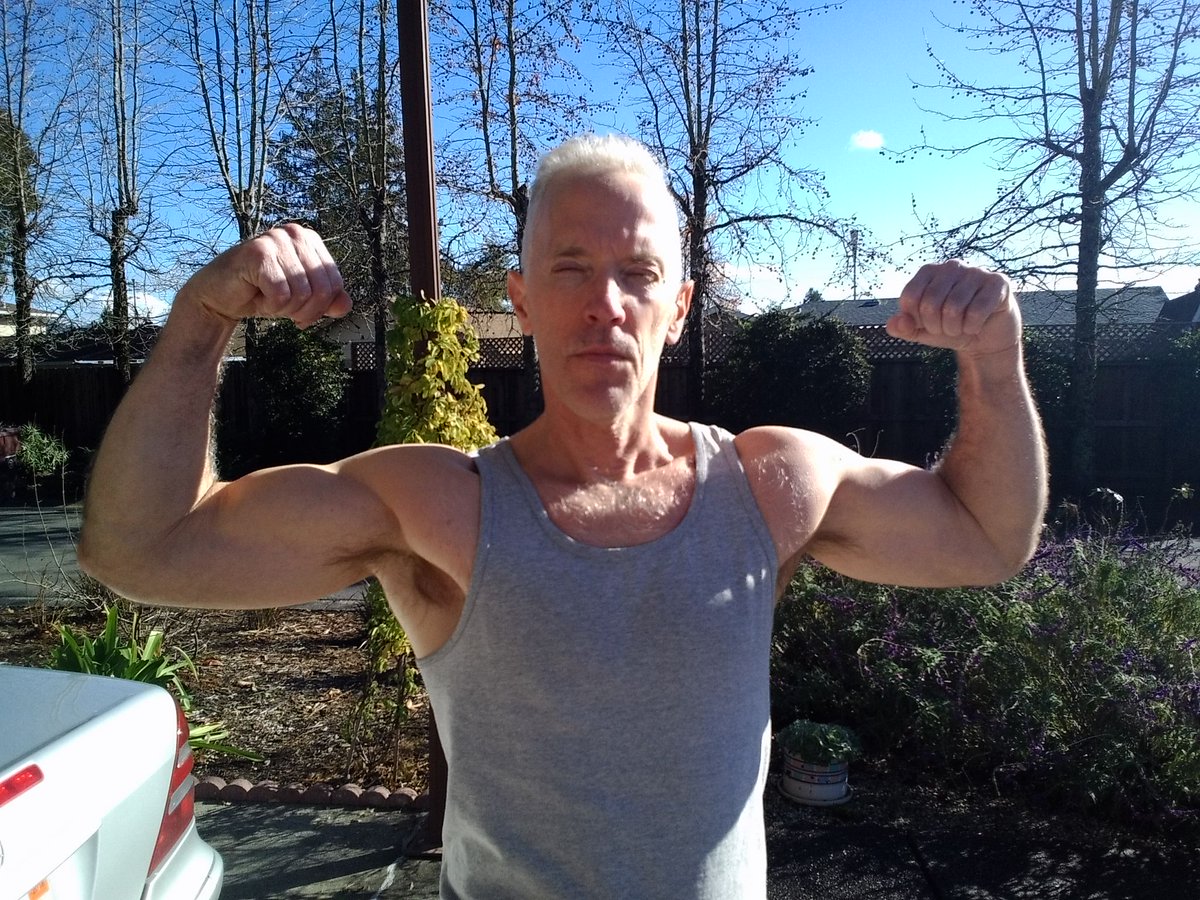
Here’s another photo taken two weeks later (in a new shirt).

I’ve been lifting weights for about 7.5 years now, although most of the muscle I put on was in my first year of training. I’ve been using a high-intensity style of training for under two years.
People ask me a lot about what I do to get this way, and while I’m proud of the way I look, I consider myself totally average physically. I’m not a talented athlete and have never played team sports, having spent most of my life reading. I merely train with consistency and have my diet dialed in.
I train a total of just over 1 hour a week, using 2 approximately 35-minute sessions. I emphasize this point because many people are under the impression that building muscle requires long hours in the gym, and it does not. However, there are a few keys to making 1 hour a week training work.
- Work out with intensity. The gym isn’t for socializing or fooling around. Go into the gym with the intention of crushing your workout, then do so.
- No rest between sets/exercises. Pause only to break down or set up equipment, or if need be, to catch your breath. Quickly move to the next set/exercise. This is great for cardiovascular conditioning too.
- No looking at your phone. Or the TVs on the wall.
The fitness industry – magazines, gyms, trainers – have a vested interest in promoting the idea that you need to be in the gym constantly to be in shape. But you do not, if – and it’s a big if – you know what you’re doing.
The only “muscle-building” supplements I take are 25 grams of whey and 5 grams of creatine right after my workout. So, only twice a week. Even these may be superfluous but I use them as insurance since I don’t want to leave any gains on the table. (My whey of choice.)
Almost the only other exercise I do is walking a couple miles on off-gym days, and I do that consistently.
Here’s what I used to look like (left):
Before and after – 9 years ago vs today. pic.twitter.com/enIzynDykk
— P. D. Mangan ???????? (@Mangan150) June 12, 2017
Diet
Diet is extremely important for both leanness and muscularity.
I eat what I’d describe as a low-carbohydrate paleo diet. At my meals, I emphasize meat or eggs, and eat one or the other at every meal. In my opinion, healthy diets should be based this way.
I also eat dairy: cheese, full-fat plain yogurt, and cream, but not milk, which contains lactose and reliably gives me acne. I also eat vegetables, mainly things like onions or mushrooms that go with meat, but I hardly eat any fruit. I drink coffee, tea, and wine, and the occasional cocktail.
With the exception of a rare cheat, I don’t consume grains, soy, seed oils, or sugar. Basically no processed food at all. No bread or pasta, no desserts (except occasional dark chocolate), no breakfast cereal or bagels, etc.
The important part about diet is to have it dialed in. I don’t have garbage food in my house, and rarely eat outside it. If I do, I make every effort to eat healthy.
Building muscle and staying lean is easy
Staying fit and lean and building muscle is easy.
The key is to have your routine ON LOCK.
If you have your diet down, don’t eat anything else. No cheating. Don’t have crap food in your house, and refuse to touch it outside it.
Gym sessions are twice a week, about 30 minutes at a time. Everyone has time for that. If you say you don’t, then cut back on TV or internet surfing. If your day is too busy, get up half an hour early twice a week and go to the gym in the early morning.
Being fit is a lifestyle. You can’t hope to “go on a diet”, lose some weight, and then return to your former ways. That’s a recipe for failure.
And, while any exercise is better than none, to be fit you need to exercise consistently. Not necessarily a lot, but you must do it regularly.
Following these simple rules can help build muscle at any age. If you’re getting older, you need never worry about weakness and frailty. If you’re younger, you’re building a solid foundation both for the present and for your older age.

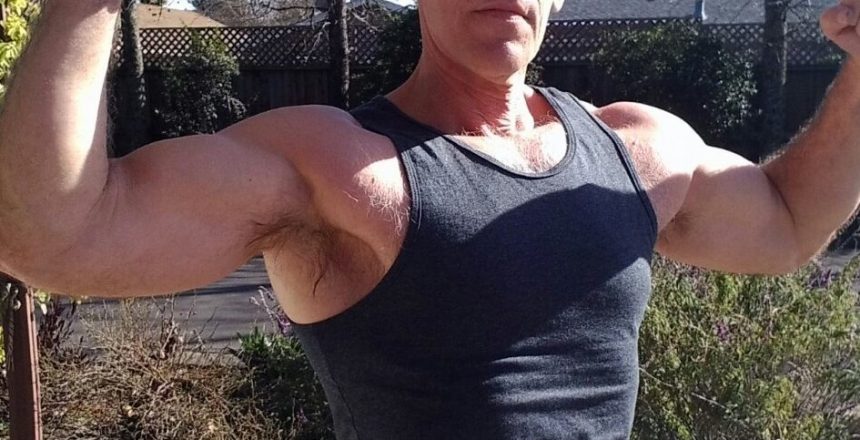



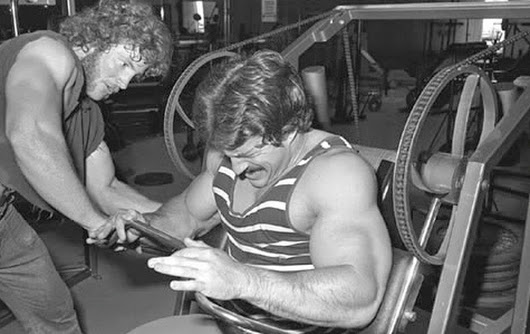
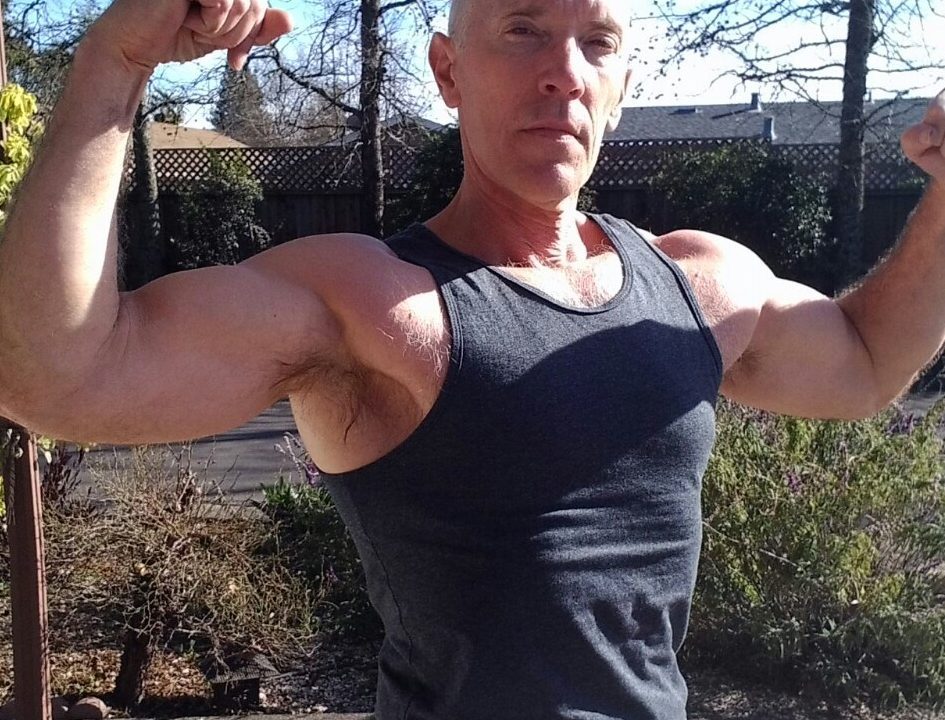
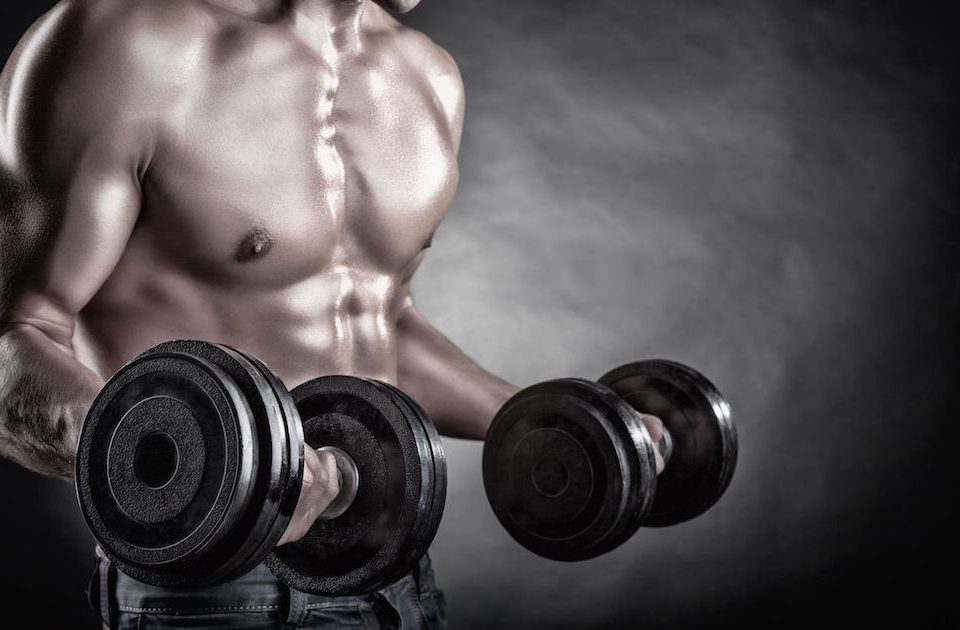
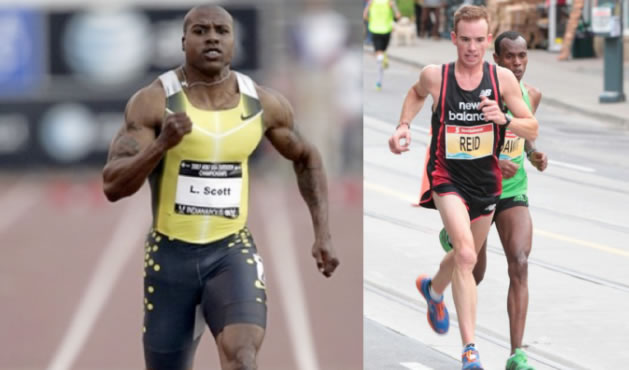




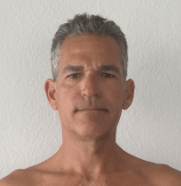
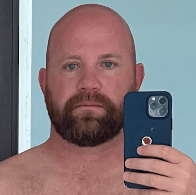

53 Comments
The funny thing is that you don’t look a bit older than you did nine years ago. You just look more muscular.
Good post. The reality, though, is that most people simply do not have the discipline to follow the type of lifestyle you lead (particularly the consistent weight training and the no-processed food diet). I consider myself a fairly disciplined person, and I think my lifestyle is pretty healthy overall, but I admit to not being as consistent with diet and weight training as you are. These types of posts serve as inspiration for guys like me to do better, so thanks.
You mentioned that most of your muscle gain was in your first year. Where on your site can I find what you did? Your current content is about the HIT workouts you do now. Did you do the same in the beginning?
Hi Tim – What I recommend to anyone, new to the game or not, is what I do now, a high-intensity workout. I didn’t start that way though, I did a standard 3 sets per exercise type.
I’m about to turn 47, just under 5’10” at 148lbs, 18%ish BF, and have been lifting solidly for 2 years. I’m not putting on the muscle I’d like. Came to your site after seeing a pic on Twitter with height, weight and body fat %. Funny thing is my goal is 160 lbs with sub 15% BF.
So your comment of putting on most of your muscle on a different regime seems more relevant to me over a HIT program that may not produce the gains. Hence my curiosity.
Virtually any program will produce newbie gains, and especially so in my case, since I was underweight. After the first year or so of gains is when the real work begins. In addition to a solid HIT program, you may need to adjust your diet.
Hey there I’ve read all your articles I’m just unclear about 2 things, is there or isnt there a difference in training for bodybuilding and training for strongman events is there a difference in working out for size and doing it for strength or is the difference in results from doing these different types of exercise not vast enough and so one may as well just do one type of exercise, if there are different results between these two type then how should one exercise for strength and how should one exercise for just looking bigger better and more swole? Lastly I drink lots of cheap brand coffee during the day and for a while I stopped and now after reading your stuff I dont know why I ever stopped because I like it and its healthy but my question is how many mugs of coffee a day is too much or is there no such thing as too much. I think I drink anywhere from 10 to 15 mugs a day.
Strength is highly correlated to muscle mass, so there isn’t a different way to work out for them. And that’s a lot of coffee.
Preach it. As I’ve gone on enough about before, following your methods has made a new man of me. My adaptation of Dr. Baker’s carnivore way of eating has made yet another similar sort of improvement, with even less working out these days. I am absolutely convinced there’s something to eliminating fiber from the diet — not just starches and sugars. Doing so has freed up metabolic energy (?) from the attempt to digest the indigestible to producing hormones and muscle, from what I can tell.
And I still drink coffee, tea, some beer and wine. It’s about *eating* carnivorously, the drinking is very incidental in my case.
I’m really looking forward to what you eventually find out with it.
You know, the way I see it, it’s not really discipline. It’s just doing what you know to be right and not doing what you know to be wrong. Is that discipline, moral relativity, or…?
You look much leaner than a year ago, great physique! I can vouch for high intensity training. Been doing it for a few years and have seen improvements in muscle mass and eliminated pains in joints. There is a learning curve and once you know how to do it you can’t go back to working out 4 to 5 times a week.
Thanks, Pieter! That means a lot coming from you. I am leaner than a year ago, and I agree that once you learn high-intensity, there’s no going back.
To everyone else, Pieter introduced me to high-intensity training, for which I’m grateful.
And so thanks to both of youse from me. Seems so long ago now, I remember being so, so skeptical. I’ve gone on to leave the gym behind and just do body weight training like Dr. Naiman, but also trying elements of explosiveness like that punk Baker does.
In general, just holding something til you have to drop it, regardless of how heavy it is.
What I have done from Baker is reather than intervals of x/y seconds of activity and rest, just go all out til you have to stop, then rest til you can repeat that. So basically, the intervals timed by how you feel rather than a clock. He says that not resting longer between max effort limits your explosiveness. I guess I agree, but I’ve also not been training like that at all since I’ve been fighting off a nasty bit of bronchitis.
It goes without saying that you are a role model for most if not all of us. I have a couple of questions:
do you eat dairy for the fat, for the calcium, for the taste,whatever? Do you make a point of eating cheese and yoghurt from A2 milk? Do you still do intermittent fasting? At the gym, what are your favorite exercises? Thanks for making this a great site.
Thanks, Jose Carlos. I suppose I eat dairy because it’s there. If I need a little snack, a piece of cheddar cheese or a cup of yogurt are quick and easy, and yes, I do like the taste. I don’t know what A2 milk is, but, especially with yogurt, you need to watch the ingredients. Regular brands of yogurt often have a long list of fillers and chemicals, like carrageenan and preservatives, but if you look around a little you can find yogurt that lists milk as the only ingredient. Trader Joe’s is a good one in my neck of the woods.
I still do intermittent fasting, not quite as regularly as I used to, but it’s very common for me to go 14 hours without food, overnight. I get up at 4:30 AM usually, might not eat until 10. That’s nearly 16 hours of fasting there.
My favorite exercise is the deadlift, probably because psychologically it’s a great feeling to be able to lift a heavy weight. Hardly anyone else in my gym does them. Same goes for weighted dips and chins. T-bar rows also gives you a great sense of cranking through a powerful exercise. As for the rest, I enjoy them all. I emphasize compound exercises. Calf raises seems like a pain sometimes, but I do them anyway.
Why nobody (you know) lifts? The spectrum of social classes in fitness. Higher status people go for marathons and bike riding, while working class go for powerlifting.
Great transformation in the pics! very good advert for your methods.
Weight training has also been great for me. It would be good to cut the workout time down, though I workout at home so it’s not that onerous. I may have a look at this high intensity approach, I’m not sure where to start, will have to do some reading.
Not sure I could be that strict with the diet though, I tend to go off the rails if I have a too strict diet for too long for some reason.
Congratulations. The before-and- after photos are really inspiring.
I am ten years older than you. Eighteen months ago, with you being one of my influences, I started weight training. Thanks.
I too do HIT, and although I am happy with my muscle buildup, it is nothing like yours. I am aware that there is an element of genetics in muscle growth. However, do you have any data on the effect of age?
Hi Isaac, and thanks. Aging allegedly causes anabolic resistance, which means that the anabolic response to both resistance training and dietary protein is blunted in older age. Howeber, I’ve come to the view that anabolic resistance is mostly about insulin resistance, the latter being the ultimate cause of the former. Insulin is necessary to build muscle, so if insulin resistance is present, muscles don’t respond as well to growth signals.
But, you’re certainly correct that genetics are involved. While my 23andMe profile said I have the genetics for strength training, I was surprised when I read that, as my father and brothers and I have all been slightly built. My Dad was supposedly 125 lbs at 6’0″ when in his 20s.
Interesting! My 23andMe report says I have predominant fast twitch muscles, which explains why I and my brothers have always been naturally strong and good at things like wrestling, but much weaker in endurance events…That has encouraged me to adopt your high intensity methods, though I find I make more progress with 3 sets of increasing weights….I have also found that yoga and jiu jitsu are increase my flexibility, which wasn’t great after years of sitting behind a desk and running at lunch. Have you tried yoga?
No, I’ve never done yoga.
72? Excellent. I am, near as I can tell, about PD’s size. 5’11”, 160. Long limbed. Both PD and I claim to be “hard-gainers”. That is, it’s harder for guys like us to pack on muscle than other guys.
I believe it’s due to the limb length/overall height ratio. Longer limbs mean different leverage and so muscle development. This is where genetics come in, I think.
Dennis needs some SUNSHINE though…is there none of that in that California these days?
Nope, not a lot of sunshine right now. Pouring rain at the moment.
Great stuff, as always – thanks for sharing.
Quick question – do you still take Arimidex? Or has your diet and lifting regime made it unnecessary? Asking for a friend 😉
I recently stopped taking it after cutting my dose way back. I want to see how I do without it, and suspect I don’t need it.
So what does a typical 30 minute workout look like? What exercises, how many sets & reps? (No, I don’t really care how much weight each time.)
You can see that in the post I linked in the article on my high-intensity training routine.
Good stuff, Dean. Your blog has been helping me a lot.
I haven’t tried this method yet. What I can say for sure is that everyone is different, and not everyone responds the same to various weights and routines.
What I’ve learned after two years of lifting, above all, is that after a certain point you ate fighting your own genetics to achieve significant gains of size and strength.
Following from that I’ve discovered that changing up my routine every 3-6 weeks helps a lot.
Thanks for your great work here.
Congrats, PG. You look great. You have a Crossfit physique (30 years younger, to be fair ;)) but most likely without the injury risk associated.
You are inspiring 🙂
PS: I have read your comments in Twitter about your change in your diet.
I too had to change because I was ill:
I had been a vegetarian for more than 10 years and when I was breastfeeding my second son I had a terrible depression and had a stomach yeast infection that would not resolve. Thank God my husband arrived one evening with a couple of big steaks and told me to start caring about my health. I started weight lifting 6 months afterwards and I have never been so fit and healthy as today.
Thanks, Paloma. I’m currently working on a book about veganism and eating meat. I think there’s far too much bad information out there; most vegans actually think their diet is healthy and get upset if you say it isn’t.
Are you familiar with “Body by Science,” by Dr. McGuff? It came out about nine years ago; the premise being you can do a full weight or machine workout in 20 minutes, then a week to recover. Load and hold to exhaustion for a target of 90 seconds. A variant of HIT.
It works. I always kept a record of what I was doing, wherever I was doing it, and every week I was stronger than the week before.
I really need to start that up again. Sigh.
BBS is a great book/program.
Very interesting post, thank you.
I’ve been lifting for 2.5 years, started with Rip’s Starting Strength and moved to 5 x 5. I’m 50 years old, 5’11”, 185# (gained about 20# of mostly muscle in my first year and a half, typical new-lifter gains).
I found myself very interested in the high-intensity aspect of your workout, so this morning I gave it a try. I stayed away from my one rep maxes, but went at about 85-90% of them, thinking that this would be safer. You are most certainly right about the difficulty of these sets; I did a 225# squat for 5 x 5 with a 30 second rest time (I’m not yet ready to take no rest between sets, but think it a worthy goal). These sets, my first of the day, were *much* more tiring than my normal sets (I usually take at least 2 minutes between sets). I was far more winded after the squat set than I normally am, and my heart rate was definitely faster than during normal sets. Quite a difference!
I suspect that this may be a more efficient way to burn fat than slower-paced sets because of the increased pace of the exercises. I am not sure what the effect on having bigger numbers might be (e.g., my current squat goal is 315 for reps, and I’m not certain I will be able to enough weight to get to this goal should I do only the high-intensity version). However, it’s a great way to lift, and I plan to incorporate it at least once into my three-times-a-week lifting schedule.
Many thanks.
Mr. Mangan, I really enjoy your posts. For about a year and a half now, your guidance is legit, and your books are excellent and scientific. Thank you for being simple in your offering. Have you looked at the Carnivore diet at all? I diet Keto, slightly more veggies than the norm, and also intermittent fast in a 16/8 window.
I lift heavy and am very interested in adapting a more simplistic protocol. I also roll jiu-jitsu 3x a week, so that is all of anaerobic cardio I need.
Thanks again for all you do!
Hi Thomas, and thanks! I have looked at the carnivore (zero carb) diet, and in fact I interviewed Shawn Baker, M.D., one of its leading proponents. My take is that it’s perfectly healthy and if you want to do it, go for it. I eat close to that way myself, with eggs or meat with every meal, but I do eat a few vegetables and salad, and drink coffee, tea, and wine.
Please,
write an educational text when to take BCAA, whey, creatine… All of it after training, or something before… it would be very useful!
Thanks
Hi Duki, I’ll tell you write here. It doesn’t matter when you take creatine, since it has a long half-life and builds up slowly in muscles. Timing isn’t important. For whey, best time is immediately before or after a workout. I usually take it after. BCAAs are better taken with a meal, since you need all essential amino acids together to build muscle.
Thank you very much!
What an amazing article and very clearly written and based in science.
Can you recommend this protocol for post menopausal women?
Alternatively can you direct me to a site more appropriate for my needs.
As a PhD in biochemistry and molecular biology and with a life time of interest in health, fitness and longevity I found this article useful and inspiring.
Thank you
Hi Jane, thanks very much. I can recommend this for older women; human muscle physiology is the same in men and women and the need to exercise muscle for health is the same.
Does NutraBio whey protein powder you mention contain soy?
I believe it may have a small amount of soy lecithin, which is not a concern as it has no phytoestrogens. It’s the protein, not lipid, component of soy that’s a problem.
How much does testosterone impact ability to build muscle ?
Mine is 2.76pg/ml
My free test is 4.21pg/ml
I am 31 year old male,married wanting to have children next yr.I doit know what to do… TRT or what.
Afraid of fertility issues,prostrate cacner,,insomnia,hair fall,shrinkage of testes etc
I workout but just cant fucking pack on any iron except the 1st 2 years i worked out in my life which was 10 yrs back !! Pls help
Not sure about those units. According to a calculator, that’s like .276 ng/dl which is impossible. And your free test can’t be higher than total. TRT can impact fertility, but doesn’t do the other stuff. You should talk to a doctor.
It’s very easy to maintain muscle, two short sessions a week are enough for that, but you said yourself you had to build them up before you even picked up your current style. I’m not convinced this little training can get you buffed with weights so low you dont need to take any breaks.
“with weights so low you dont need to take any breaks.” Dude, I outlift 90% of the guys in my gym, regardless of age. Unfortunately, the bodybuilding and weightlifting worlds are filled with people who insist that their way is the only way that works, and those assertions are usually accompanied by as much evidence as you gave here.
Spectacular stuff PD — I’m 55, been working out 4x a week with an emphasis on cardio and undisciplined effort on the weights a few times a week. Highly inspiration post. Will check out your bool.
Hi! You look great. At 62 years old in such great shape, how does this effect your ability to attract younger women? Thank you!
Thanks, Bance. I have a steady girlfriend who’s 9 years younger than me. Since I’ve been off the market for a few years, I couldn’t say whether women younger than her find me attractive.
Would you describe your warmup if any
Or is that in your book
It’s in my book, but the short answer is I do very little warm up.
You are truly an inspiration.
Your articles are well written.
You walk the walk.
Embracing the low carb diet so I can work towards seeing my abs and now know that a healthy physique can be maintained in your 60s.
What a disgrace it is for a man to grow old without ever seeing the beauty and strength of which his body is capable.
-Socrates